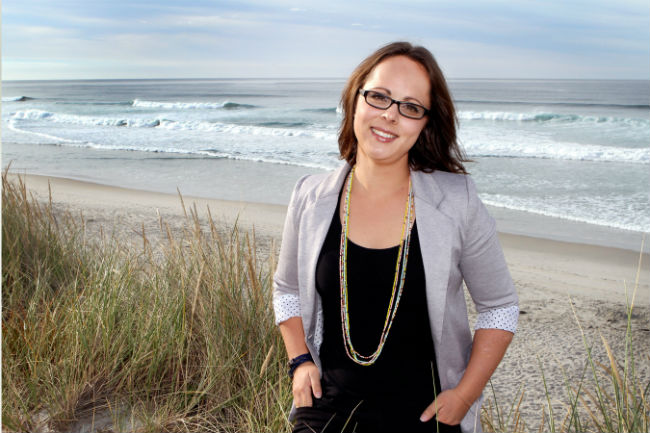
Being attacked by a shark at age 13 and watching herself heal afterwards formed the basis of Otago PhD candidate Jenny McDowell's fascination with the ocean and the human body. It also fostered her ambition to become a marine forensics and disaster victim identification expert.
In 2014 Jenny was awarded an AMP National Scholarship and a Student Research Award from the University of Otago Centre of Electron Microscopy. Both honours support her work researching the chemical and morphological changes in juvenile bone when exposed to a marine environment.
Jenny explains, “Simply, I am looking at how juvenile pig bone dissolves in water and trying to use that to help in victim identification in terms of giving a time line of how long a human body may have been in the water.
Juvenile decomposition a new area of study
“Until now people have barely studied juvenile decomposition. It turns out there is a huge difference. We are getting a significant amount of dissolution in the first six months that in an adult doesn't happen in a year. We did not anticipate this. We found there is no baseline to work from – so I am trying to create that baseline.”
Jenny was motivated to take up this line of research by her mentor and head supervisor, the late Professor Jules Kieser, the then Director of Otago's Sir John Walsh Research Institute (SJWRI). His sudden death in June 2014, was both a personal tragedy and challenge.
“It was Jules who encouraged me to turn anatomy into a career by specialising. I tried biological anthropology and discovered forensics was where I excelled.
Four fields of research means many supervisors
“Supervision-wise, I am only just getting back on my feet. I now have a head supervisor, the new SJWRI Director Professor Richard Cannon, and three co-supervisors to cover the four fields my research crosses.”
Some may find Jenny's choice of research odd after the trauma of being attacked by a shark.
“I have had almost a sick fascination with the ocean since the attack – I almost did marine biology – but I also have a deep seated fear of the water. This research brings my two fascinations [anatomy and marine science] together, albeit in an unorthodox way.”